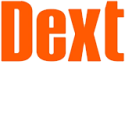Brandon Borsen becomes a partner
Learn moreChoosing your 401(k) pathway: A guide to a golden retirement

Whether you’re two years away or 20, the golden age of retirement is on the horizon. And your 401(k) serves as a dynamic tool, guiding you on a path toward financial stability. But one question that may need to be answered on your journey is this: Should you go the singular, block-of-money route, or should you embrace a more diversified approach as you traverse toward retirement? Let’s explore the two different avenues you can take with your 401(k) as you plan for retirement.
The singular path
Under the singular approach, your 401(k) is managed as a unified block of money. This means your assets are allocated in a way that aligns with your overall objectives and risk tolerance. It also means you’ll need to check in on your progress from time to time, to make sure your assets remain well-balanced. There are both good and not-so-good things about taking the singular path. Let’s explore why.
The good
It’s simple to manage. Taking the singular path is very straightforward. It makes it easier to manage—and understand—your 401(k). This method is great for those who prefer to set it and forget it. You won’t need to be very hands-on with this strategy.
It’s cost-effective. Using a single strategy may involve lower transaction costs and management fees than a tiered approach, where assets are frequently reallocated.
It results in consistent growth potential. When you focus on long-term financial goals, you can benefit from the compounding effect. This may result in higher overall returns over a long period of time.
The not-so-good
It lacks flexibility. When you take the unified approach with your 401(k), it may not provide enough flexibility to adapt to changing market conditions or personal circumstances.
It can increase risk exposure. Taking the singular route can present challenges, such as limiting the ability to adjust risk levels as you approach retirement. This means you could potentially lose more money during market downturns.
The diversified approach
In contrast to the singular path, the diversified approach involves dividing your 401(k) into three separate tiers based on your stage of retirement. These stages can be defined as the growth phase (young age), the transition phase (middle age) and the preservation stage (approaching retirement). In this strategy, your assets and risk profile depend on where you are in your retirement journey. Just like the singular approach, the tiered approach also has some positives and negatives.
The good
It allows for customization. When going the diversified route for your 401(k), you can choose a more personalized approach. This is where your asset allocations can be adjusted based on your changing needs and goals during each phase of retirement.
It’s better at managing risk. As you make your way through each phase of retirement (i.e., growth, transition, preservation), the tiered strategy makes the transition from a high-risk portfolio to a more conservative one. This helps minimize potential losses as you approach retirement.
It adapts to market fluctuations. A tiered approach can help you potentially take advantage of market opportunities at different stages. This means you can optimize the return on your investments and reduce risks.
The not-so-good
It can be complex. When using a diversified path, it means you’ll be managing multiple portfolios. Doing this can be complicated; it requires a deep understanding of investment principles and can also be time-consuming.
It could cost more. If you decide to diversify your approach, it could involve higher transaction costs and management fees because you’ll adjust and reallocate your funds more frequently.
It can result in missed growth opportunities. Transitioning into your preservation stage means you’ll be taking a more conservative approach. This could lead to missing out on growth opportunities, which could reduce your overall retirement nest egg.
Singular vs. diversified: Factors to consider
Deciding which path to take for your 401(k) can be difficult, so it’s important to consider several factors, including your risk tolerance, financial goals, investment knowledge and the amount of time you have until retirement. Here are a few things to consider:
Your personal risk tolerance. Understanding your risk tolerance (i.e., the potential amount you’re willing to risk so you can achieve a specific investment return) will help you determine whether a unified or tiered strategy better aligns with your investment personality.
Your timeline for retirement. How close you are to retirement plays a big part in whether you choose the singular or diversified route. If you have a lot of time left until retirement, a unified approach may be better suited to your needs. However, if you’re closing in on that “permanently out on vacation” deadline, a more aggressive tiered approach may better benefit you.
Your need for expert guidance. Regardless of the path you choose, consulting with a financial advisor can help provide valuable insights into the best strategy for you based on your circumstances and goals.
Managing your 401(k) is a critical component in securing your financial comfort in the golden age of retirement. Both singular and diversified paths have their merits. However, we suggest weighing the pros and cons of your individual needs and working with an expert to help you make the right decision. Cheers to the golden years!
Back to issue








